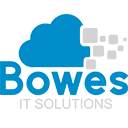Transcript
Your organization has subscribed to a new email threat-protection system. The system checks email before it ever gets to office 3 65. If it identifies a message as being spam or a phishing attack, it will quarantine it. Every day, you’ll get an email with a list of what was quarantined the previous day. The subject of that email will be Daily Quarantined Message Report.
This is your new spam and fishing filter. Here you’ll get a list of all the emails that were quarantined since you last checked your quarantine. There are several buttons across the top of the page, the most important of which is probably View, and the next most important one is Request Current Report. When you click it, this system will send a new email with your most recent quarantined items.
So when you click View, you’ll be taken to your quarantined items. In here, you’ll see a check box called show clutter. Clutter is email that has been flagged as being almost certainly spam. In this list, you’ll see everything that’s been quarantined, and you’ll be able to review it, delete it, or release it. If you click on the message’s subject line, you’ll get a preview of what’s in that message. Here, you can delete it or release it, and releasing a message sends it to your email.
If you have lots of spam or it’s been a while since you checked your spam quarantine, there’ll be more than one page of messages. This system will show 50 messages at a time, and there will be buttons across the bottom where you can advance to the next page.
You can also select multiple messages by using the check box to the left of that date stamp—that way, you can delete a bunch of spam in one go. So I’m going to go ahead and delete a bunch of spam, but I know that the message from Ingram Micro is legit. They’re one of my suppliers. So I’ll go ahead and check everything that’s clearly spam and then uncheck the messages from Ingram Micro.
You’ll also see links along the side for Malware, Release, and Trash. The malware link gives you a list of messages this system thinks have malicious content. Released are the emails that you’ve released, and trash is messages that you’ve deleted.
Across the top are buttons for report settings, aliases, attachment quarantine, and support. The report settings tab lets you control your quarantine digest. Aliases are aliases to your email account, and attachment quarantine is attachments that have been flagged and quarantined. If you have a file that you may have gotten by email that you think should have been quarantined, you can upload the file into the system and have it checked it.
The support tab is where you can get help with the system or access the knowledge base.
So that’s a pretty high-level overview of the new email threat protection system; feel free to reach out to us if you have any questions.

